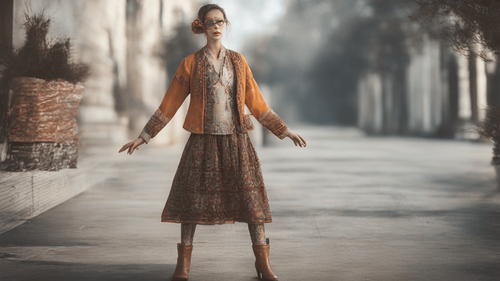
Introduction
In today's rapidly evolving technological landscape, artificial intelligence (AI) continues to redefine the boundaries of human creativity and innovation. One of the most captivating applications of AI is its ability to generate images, a process that has opened new avenues for artistic expression, practical applications, and endless possibilities.
AI to Image: Redefining Visual Art
The convergence of AI and visual art represents a groundbreaking leap in the realm of creative endeavors. Through sophisticated algorithms and neural networks, AI has gained the ability to not only replicate existing images but also to generate entirely new and captivating visual experiences.
Enhancing Realism and Aesthetics
AI-powered image generation techniques, such as Generative Adversarial Networks (GANs), have empowered artists and creators to produce images that astound with their realism and aesthetic beauty. These algorithms analyze vast datasets of images, learning intricate patterns and details that enable them to create lifelike visuals.
Unleashing Imagination: From Style Transfer to Dreamscapes
Style transfer, a fascinating application of AI to image, enables the transformation of photographs into diverse artistic styles, ranging from famous art movements to abstract forms. Additionally, AI's ability to create dreamscapes by blending elements from various images has redefined surrealism and pushed the boundaries of imaginative expression.
Applications Beyond the Canvas
The impact of AI to image goes far beyond the realm of artistry, permeating various industries and enhancing practical applications.
Medical Imaging Advancements
AI-powered image analysis has revolutionized the field of medical diagnostics. By swiftly and accurately analyzing medical images, AI algorithms assist doctors in detecting diseases, identifying anomalies, and providing more effective patient care.
Architectural Visualization and Design
Architects and designers harness the power of AI-generated images to bring blueprints and conceptual designs to life. This enables stakeholders to visualize finished projects before construction begins, facilitating informed decision-making and reducing uncertainties.
The Creative Collaboration: Human-AI Partnership
AI's role in image generation is not intended to replace human creativity, but rather to amplify it through a symbiotic partnership.
The Curator's Lens: Selecting AI-Generated Art
Art curators and enthusiasts are presented with the intriguing task of selecting AI-generated artworks for exhibitions and collections. This dynamic between human curation and AI creation sparks conversations about the essence of creativity and artistic intent.
AI as the Virtual Apprentice: Learning Artistic Styles
Artists around the world are embracing AI as a virtual apprentice, leveraging its ability to analyze and replicate diverse artistic styles. This collaboration allows artists to explore uncharted territories and fuse traditional techniques with cutting-edge innovation.
FAQs: Demystifying AI to Image
Q: How does AI generate images? AI generates images through neural networks that analyze patterns and details from vast datasets, learning to replicate visual features.
Q: Can AI-created art be considered original? Yes, AI-created art is original in the sense that it produces unique visuals based on its learned patterns, but the debate over artistic authorship continues.
Q: What is style transfer in AI-generated art? Style transfer involves applying the visual style of one image to another, resulting in a new artwork that blends both styles.
Q: Are there limitations to AI-generated images? AI-generated images may lack conceptual depth and emotional resonance, often requiring human interpretation to imbue meaning.
Q: How is AI transforming medical imaging? AI analyzes medical images to aid in disease detection, treatment planning, and improving overall diagnostic accuracy.
Q: Can AI-generated designs replace human architects? AI-generated designs complement human architects by providing visualizations, but the intricate aspects of architectural creativity remain rooted in human expertise.
Conclusion
The emergence of AI to image technology has ignited a revolution in artistic creation, expanded the horizons of practical applications, and sparked profound conversations about the nature of creativity. As AI continues to evolve and redefine visual art, its impact resonates across industries, inspiring collaboration and driving innovation. The marriage of human ingenuity and AI's computational prowess offers a promising glimpse into a future where imagination knows no bounds.